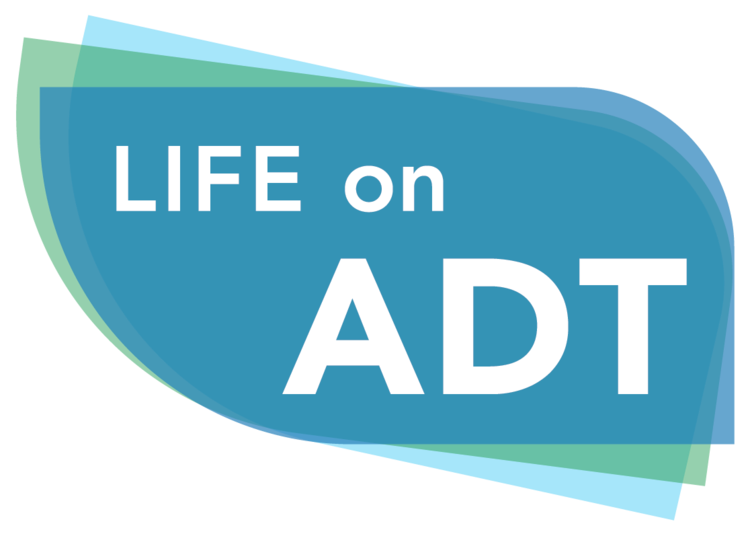Occasionally one sees asthenia and arthralgia listed as side effects of ADT. Asthenia simply means feeling weak and tired, and arthralgia means pains in one’s joints. So, how well established is it that asthenia and arthralgia are the result of ADT?
For virtually all of us, as we get older our joints start to ache and we feel more tired. Both are common with aging, and men are more likely to end up on ADT as they get older.
Feeling tired and weak is not uncommon for patients diagnosed with a variety of cancers and can be the side effects of many cancer treatments. Poor sleep, which is linked to daytime fatigue, can be a product of the distress of having a cancer or from treatment side effects. Disrupted sleep has been reported multiple times as a side of ADT (most recently by Mondal et al., 2022).
Arthritis—i.e., inflammation and swelling in the joints—commonly presents as arthralgia. So, for prostate cancer patients on ADT, are fatigue and pain in one’s joints correlates of aging, inflammation, having cancer, poor sleeping…independent of, or in addition to, some direct influence of ADT? How can we sort this all out…and is ADT the primary culprit here?
Let's start with the question, “Is there a general link between inflammation and prostate cancer?”
There are some data suggesting that there’s a correlation between periodontal disease, which is an inflammatory condition, and the risk of getting prostate cancer (Guo et al. 2021; Wei et al. 2021). A couple of papers listed below suggest that there may be a relationship between systemic inflammation and pain symptoms, such as arthralgia, for patients on ADT for prolonged time.
In a recent paper out of Lithuania, researchers looked at the medical records of over 12,000 prostate cancer patients and found evidence that there is a slightly higher incidence of rheumatoid arthritis in individuals on ADT compared to patients not on ADT (Drevinskaite et al., 2022). Previous literature has been inconclusive about such a relationship, although a slightly older review suggested that the longer patients are an ADT, the more likely they are to develop some symptoms of rheumatoid arthritis (Yang et al. 2018). Again, though, that is true of aging in general.
One limitation of the Lithuanian study is that we have no information on any other comorbidities the patients may be experiencing. So, for example, ADT can increase the risk of depression (Alwhaibi et al. 2022), and that often comes along with a sense of fatigue and body discomfort. We know that many patients on ADT are not getting enough exercise, yet exercise can help relieve arthralgia in many cases. And it can reduce the risk of depression.
In a separate paper out of the USA, there is some suggestion that one particular marker of inflammation, namely interleukin 6, is elevated in men on ADT long term (Hoogland et al. 2021). This suggests that there may be a relationship between at least one biochemical marker of inflammation and ADT. However, three other markers the researchers measured were not elevated. These included C-reactive protein, which is one of the most commonly tracked markers of inflammation (Jensen et al. 2021).
About the best we can conclude from the studies collectively is that there may be some association between having inflammatory conditions, such as periodontal disease and rheumatic disease, when a patient has prostate cancer and is on ADT long term.
To be clear, though, none of the studies provide data establishing that ADT directly causes inflammatory diseases. That is where one ideally needs prospective, rather than retrospective, studies in blinded trials. Given the multitude of ADT side effects, these are not experiments that anyone is likely to run, least of all on patients who need the drugs to control their cancer.
Thus, despite a lot of interest in the relation been aches, pains, inflammation (and aging), we don’t know whether ADT significantly contributes to these common malaises, either directly or indirectly via other factors such as depression, fatigue, inactivity, etc.
References:
Alwhaibi A, Alsanea S, Almadi B, Al-Sabhan J, Alosaimi FD. Androgen deprivation therapy and depression in the prostate cancer patients: review of risk and pharmacological management. Aging Male. 2022;25(1):101-124. doi:10.1080/13685538.2022.2053954
Drevinskaite M, Dadoniene J, Miltiniene D, Patasius A, Smailyte G. Association between Androgen Deprivation Therapy and the Risk of Inflammatory Rheumatic Diseases in Men with Prostate Cancer: Nationwide Cohort Study in Lithuania. J Clin Med. 2022;11(7):2039. Published 2022 Apr 5. doi:10.3390/jcm11072039
Guo Z, Gu C, Li S, et al. Periodontal disease and the risk of prostate cancer: a meta-analysis of cohort studies. Int Braz J Urol. 2021;47(6):1120-1130. doi:10.1590/S1677-5538.IBJU.2020.0333
Hoogland AI, Jim HSL, Gonzalez BD, et al. Systemic inflammation and symptomatology in patients with prostate cancer treated with androgen deprivation therapy: Preliminary findings. Cancer. 2021;127(9):1476-1482. doi:10.1002/cncr.33397
Jensen GL, Naziri J, Hammonds KP, Jhavar SG, Swanson G. C-Reactive Protein Is a Poor Marker of Baseline Inflammation in Prostate Cancer and Response to Radiotherapy or Androgen Ablation. Cureus. 2021;13(11):e19639. Published 2021 Nov 16. doi:10.7759/cureus.19639
Mondal S, Edwards S, Wibowo E, Ahmed H, Wassersug RJ, Ellis J, Isaac M, Dimitriou D, Mangar S. Evaluating Patterns and Factors Related to Sleep Disturbances in Prostate Cancer Patients. InHealthcare. 2022;10(5): 832. Multidisciplinary Digital Publishing Institute.
Wei Y, Zhong Y, Wang Y, Huang R. Association between periodontal disease and prostate cancer: a systematic review and meta-analysis. Med Oral Patol Oral Cir Bucal. 2021;26(4):e459-e465. Published 2021 Jul 1. doi:10.4317/medoral.24308
Yang DD, Krasnova A, Nead KT, et al. Androgen deprivation therapy and risk of rheumatoid arthritis in patients with localized prostate cancer. Ann Oncol. 2018;29(2):386-391. doi:10.1093/annonc/mdx744
